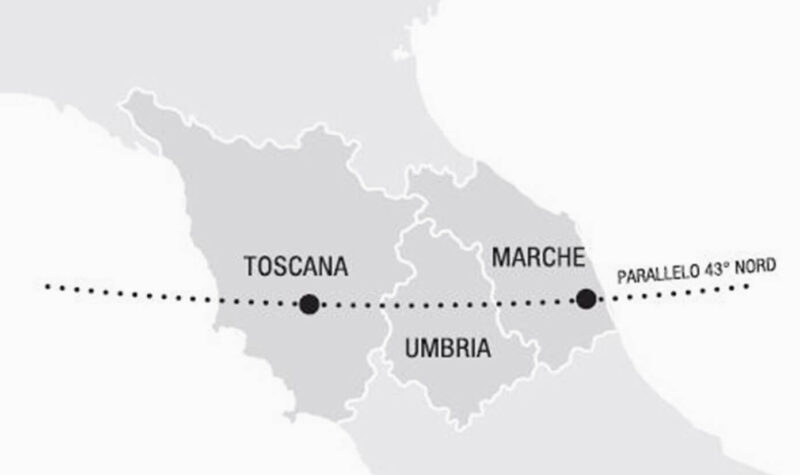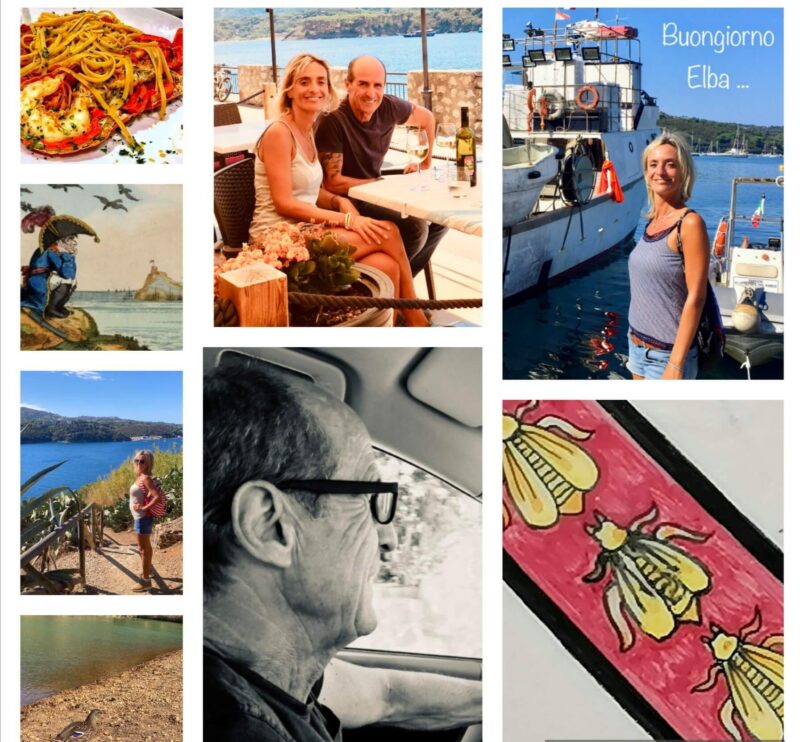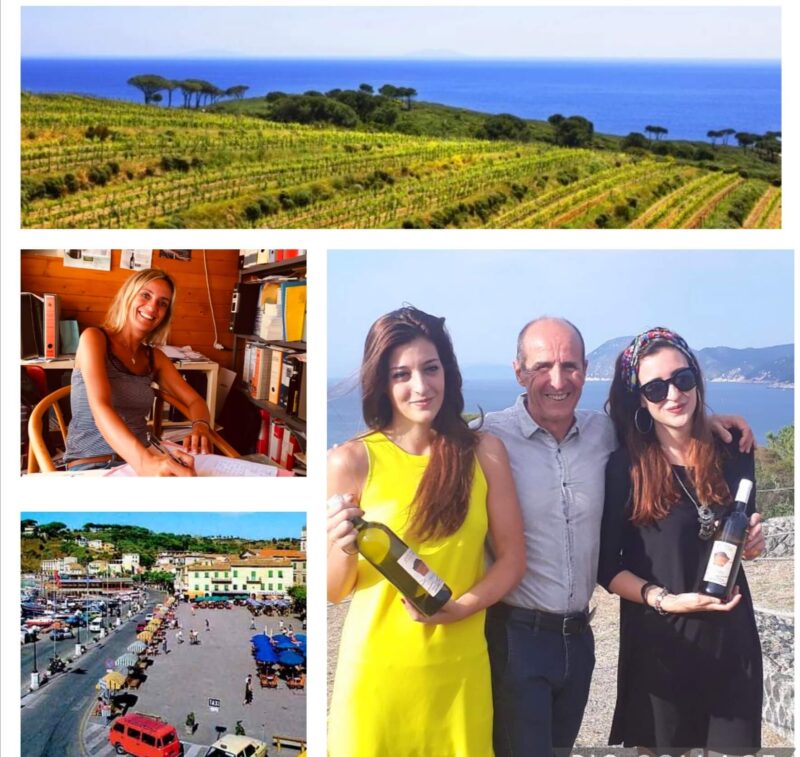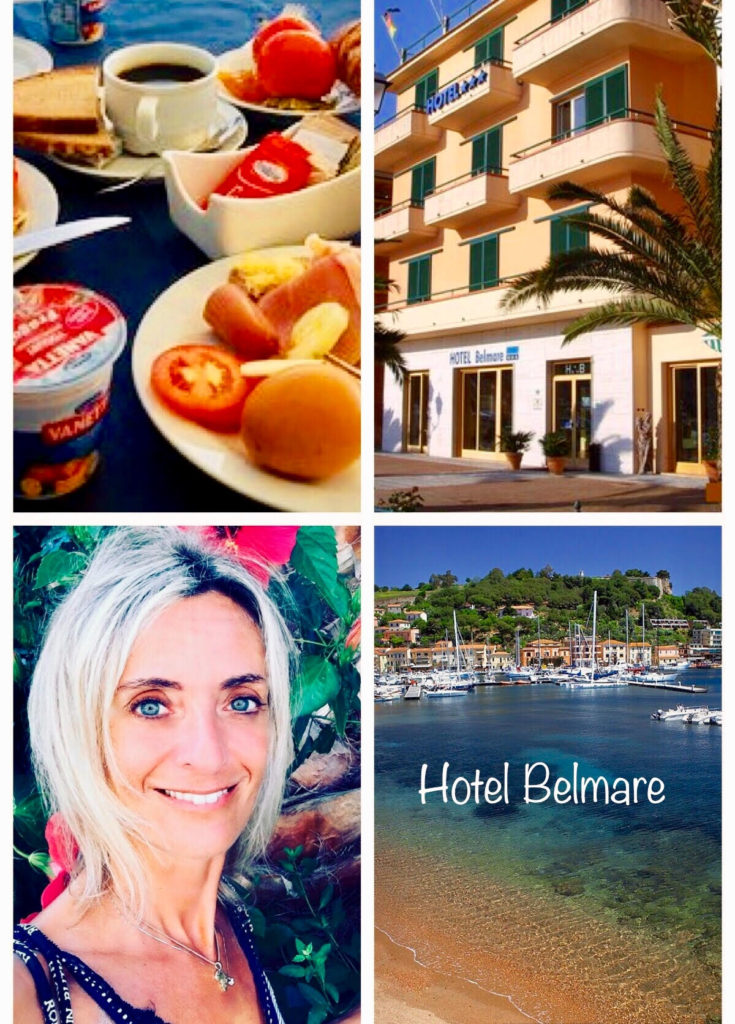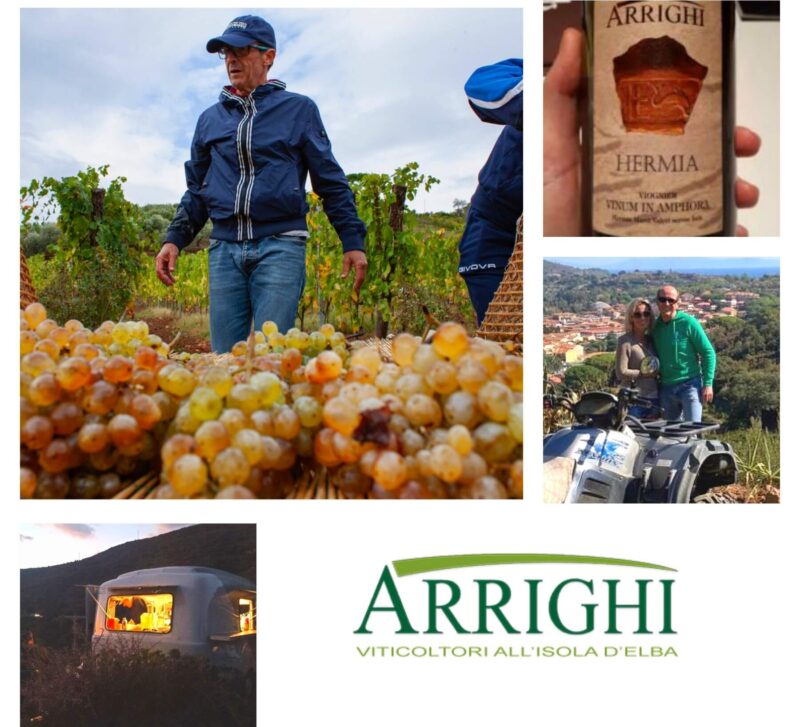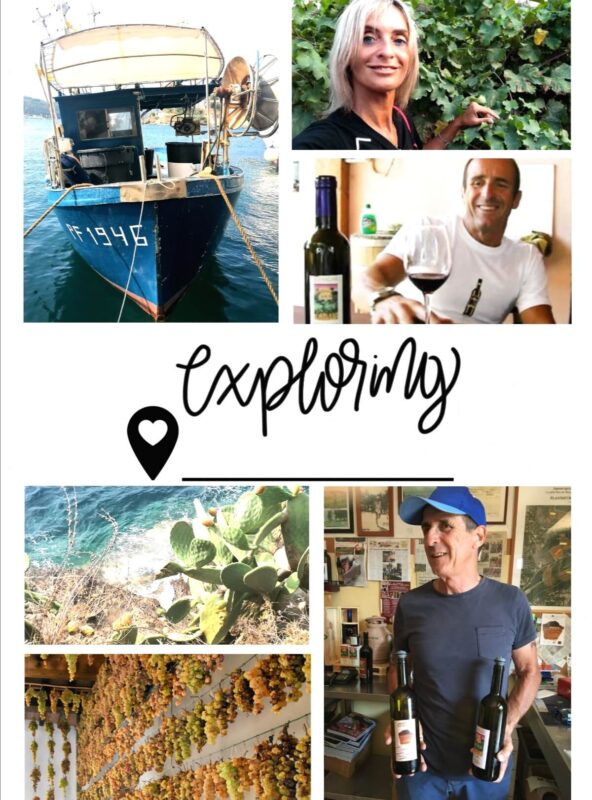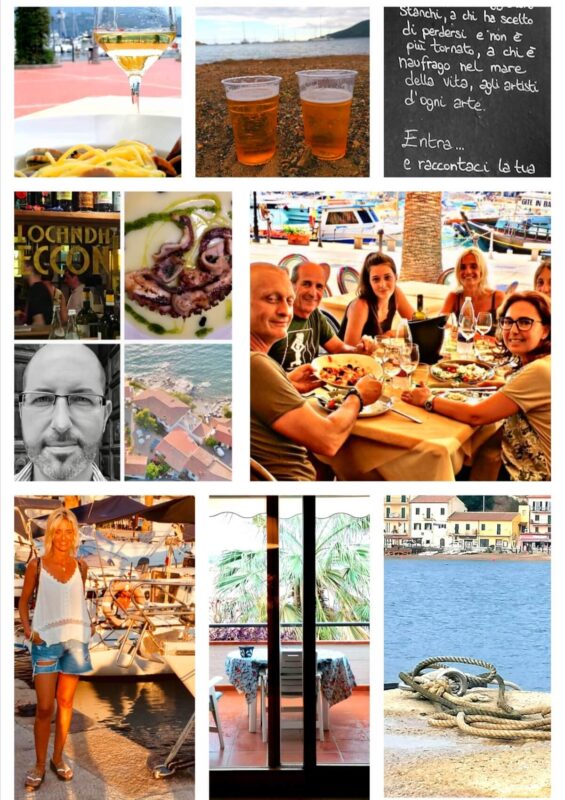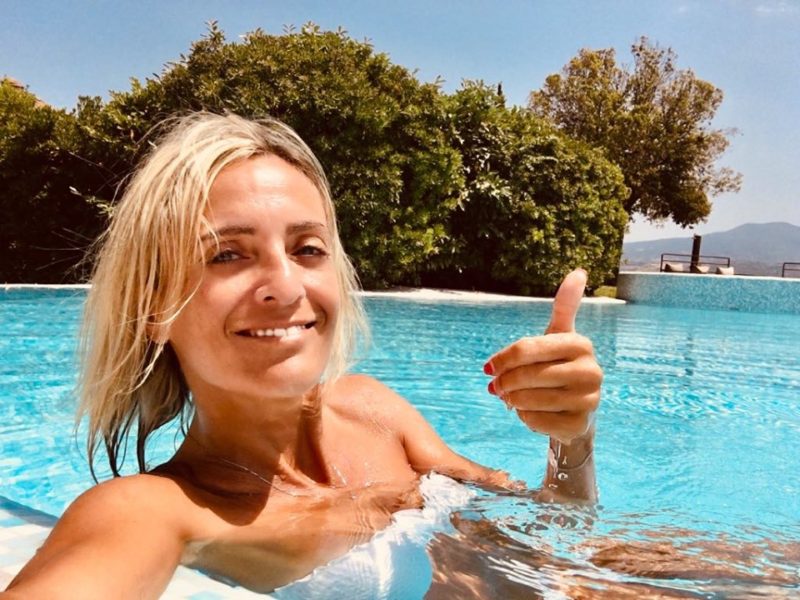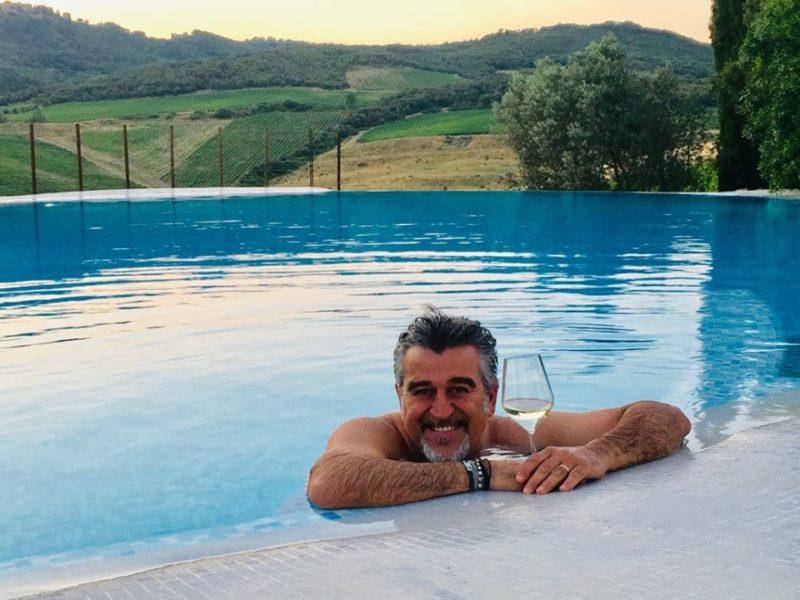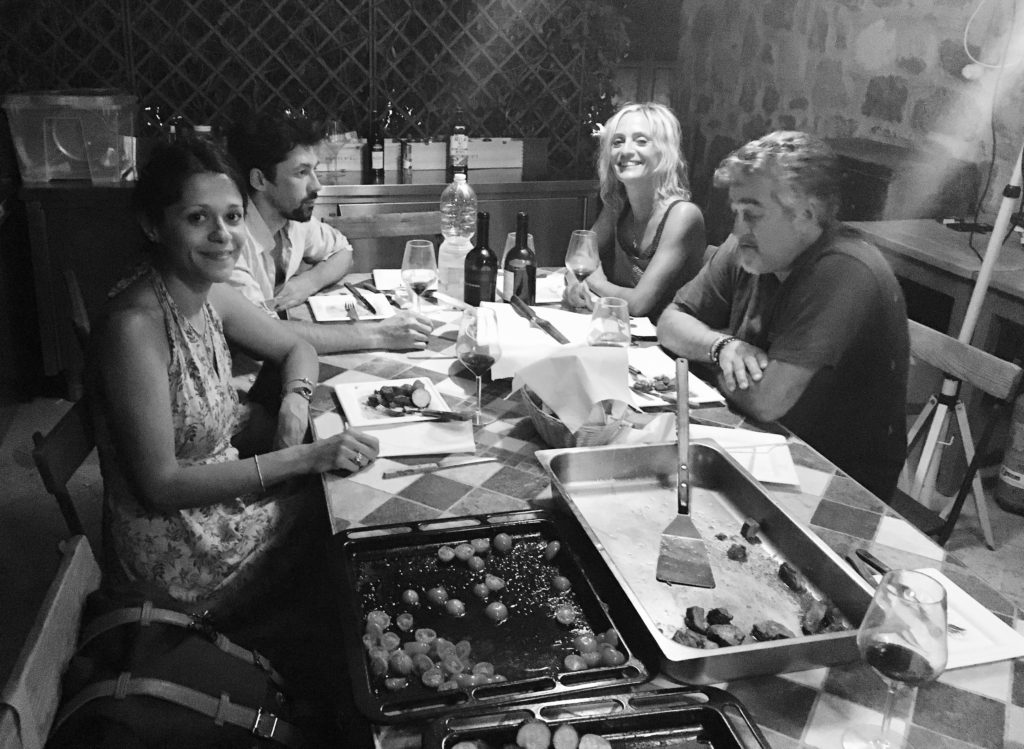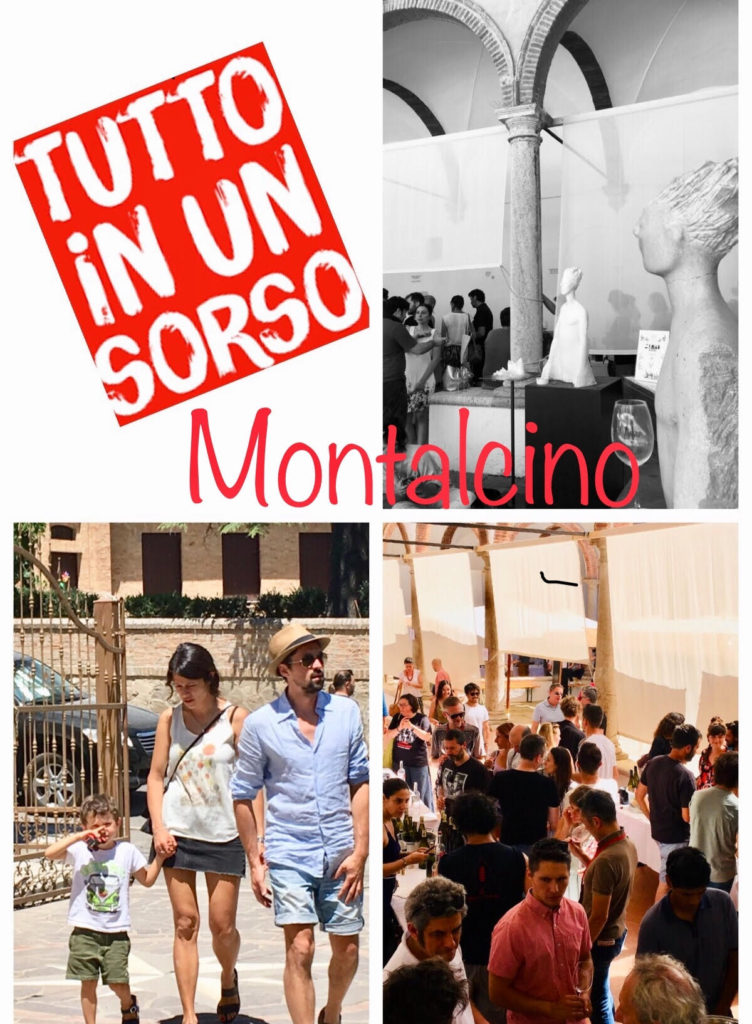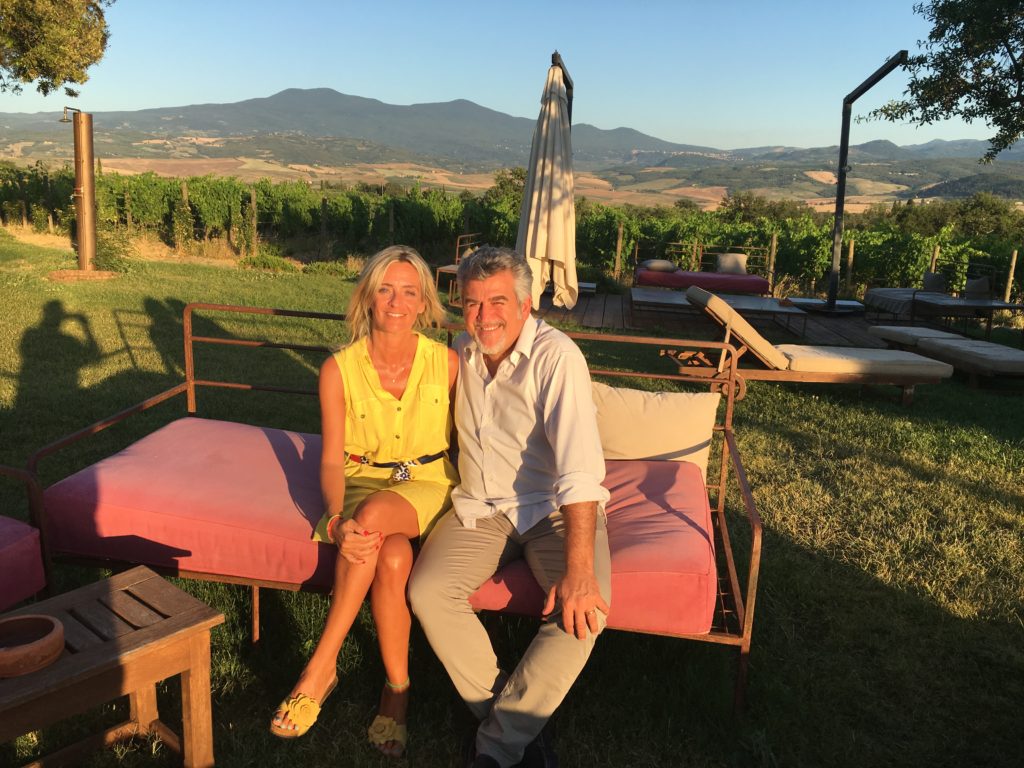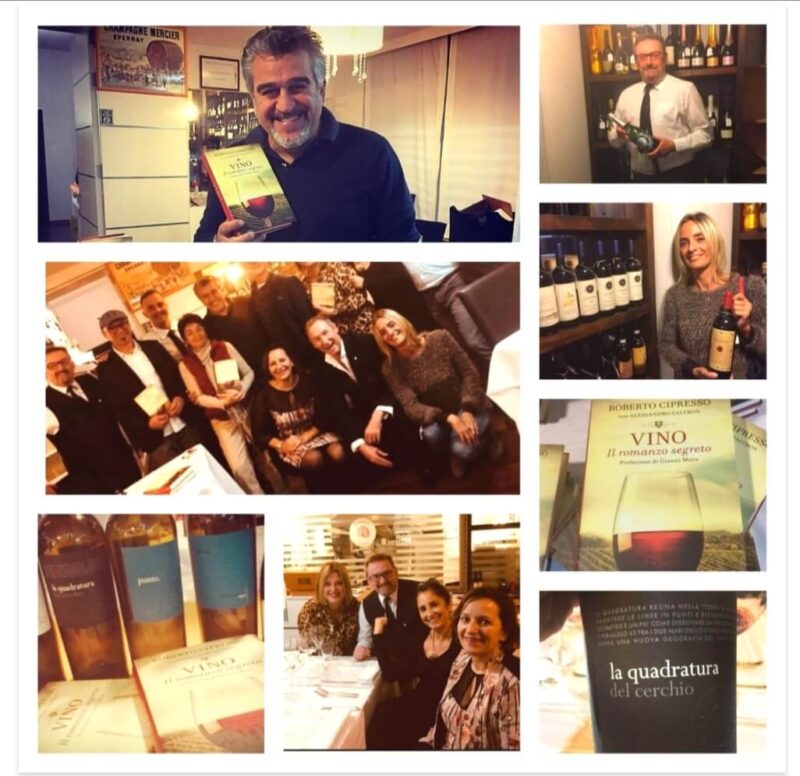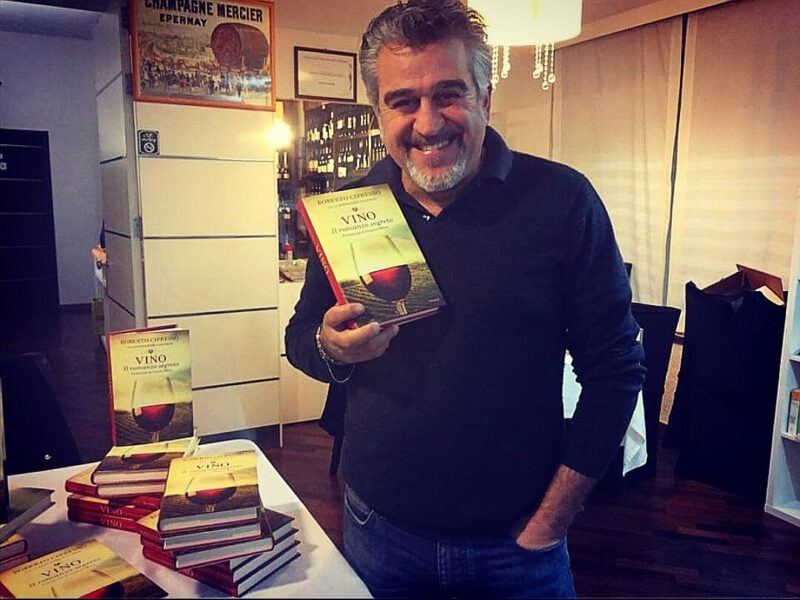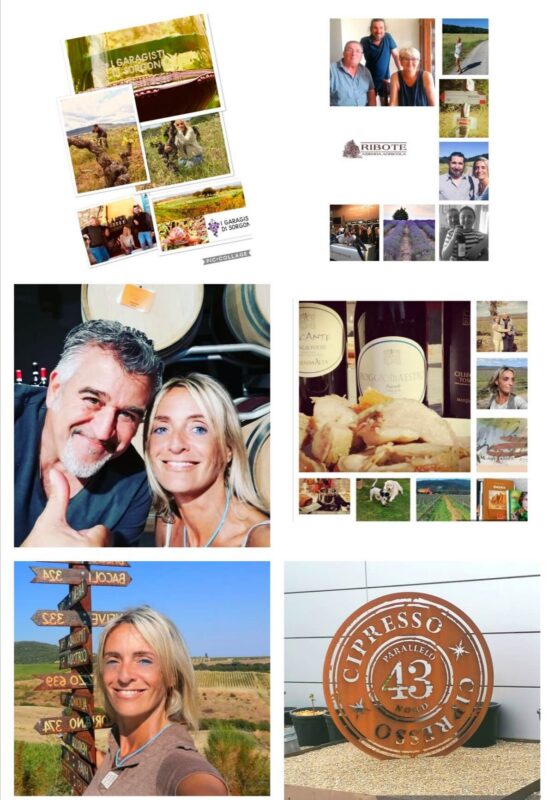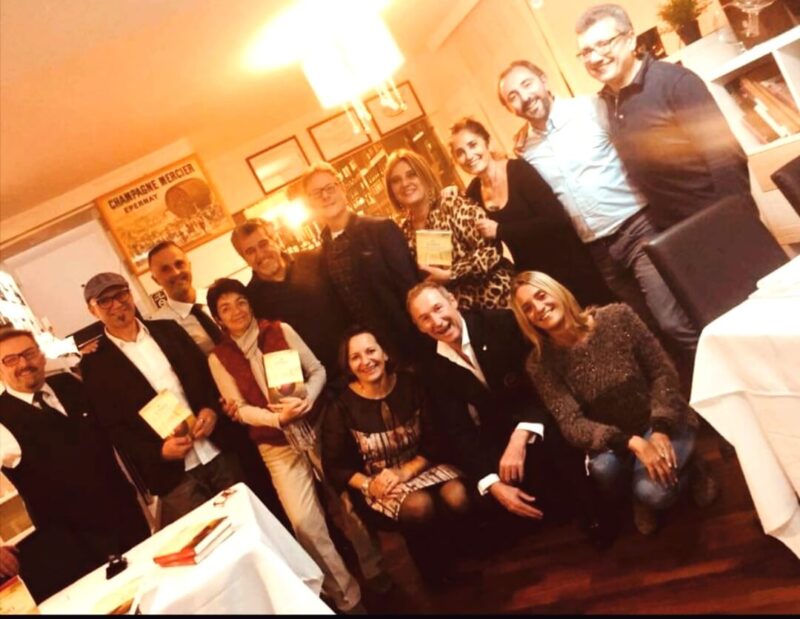La ‘Cantina di Roberto Cipresso’ un modo rivoluzionario di fare vino!
Fabio mi porta in macchina nella cantina di Roberto denominata ‘Cipresso 43’, situata a pochi passi da ‘Poggio al Sole’. Si trova esattamente in Località Bivio dell’Asso, 53024 . Qui trovo Roberto all’entrata con il suo inconfondibile sorriso .
Ci sediamo su un gradino e Roberto . Ed ecco che mi anticipa che il nuovo marchio delle sue creazioni sarà denominato ‘La Cantina di Roberto Cipresso’ . Ciò al fine di un più immediato riconoscimento del suo laboratorio divino. Vista la sua crescente notorietà. Questo è un piccolo anticipo di quello che bolle in pentola!
La ‘Teoria rivoluzionaria del parallelo 43’
‘La Cantina di Roberto Cipresso’ , a breve sarà operativa! Intanto Roberto mi spiega meglio con il suo fare gentile l’asse portante della sua filosofia aziendale ovvero la sperimentazione e la ‘Teoria del parallelo 43′:
“Quando assaggio un vino eccellente, mi chiedo qual è la sua posizione geografica, non la parcella di vigneto da cui proviene. La mia visione di terroir è ampia, perché basata su coltivazioni allineate su uno stesso orizzonte, il parallelo 43.
Un ambiente pedoclimatico diffuso di cui, in collaborazione con l’Università di Firenze, sto tuttora studiando tutte le caratteristiche, vale a dire la geografia, la geologia, le altitudini, l’orografia, il clima. Il parallelo 43 è una linea immaginaria, che passa attraverso tutte le tappe fondamentali della viticoltura, dalla Mesopotamia agli Stati Uniti.
Un filo magico, che avvolge tutto il globo, e ci fa viaggiare dal Tigri e l’Eufrate (nel massiccio del Monte Tauro ci sono state le prime forme di viticoltura) e si arresta all’Oregon (la capitale del vino del nuovo mondo), dopo avere toccato regioni con uve sacre come Croazia (Plavac Mali), Marche, Umbria, Toscana (Montepulciano, Sagrantino e Sangiovese) , Corsica, Midì francese (Viogner e Grenache) e i Paesi Baschi (Txacoli).
Non sono religioso, ma credo ci sia qualcosa di mistico, sovrannaturale nel parallelo 43, se è vero che su questa asse si adagiano Medjugorje, Assisi, Santiago De Compostela e Lourdes”.
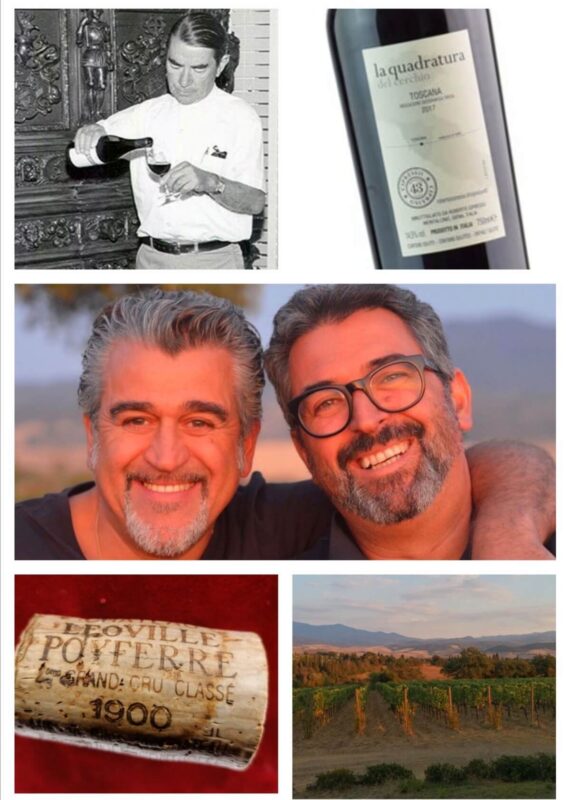
Esiste un vino perfetto? No, ma si può imparare a farlo!
‘La Cantina di Roberto Cipresso’ mira a creare un vino inimitabile a partire dai terroir più vigorosi ed espressivi del parallelo 43°, all’interno del quale i requisiti propri dei singoli componenti si esaltano l’uno con l’altro anziché ottenebrarsi a vicenda.
Si tratta di un concetto quasi rivoluzionario, che scandalizzò quando nel 1995 venne fuori ‘La Quadratura del Cerchio’, che:
- è un rosso fuori dagli schemi . Un blend di Schioppettino del Friuli, Montepulciano d’Abruzzo e Sangiovese di Montalcino;
- riassume nel nome della sua etichetta il modus operandi di Roberto in fatto di vino! Proprio per questa voglia immensa di scovare un modo per migliorare sempre!
Non si può raggiungere la perfezione, ma ci si può provare. Così come non si può ottenere un cerchio da un quadrato a meno che non lo si smonti in puntini! Roberto monta i suoi vini brevettando delle quadrature perfettibili, e li smonta nuovamente fino a quando non è del tutto soddisfatto. Roberto vuole offrire qualcosa di insolito, sorprendente e speciale, e si cimenta con la testa, con l’anima e l’istinto.
André Tchelistcheff , un maestro di vino e di vita
Roberto si sforza di rincorre continuamente il vento giusto. Come quando scoprì un trattato di André Tchelistcheff. In questo scritto il famoso enologo russo discuteva sulle possibili forme di supertuscan negli USA ! Roberto sposò le convinzioni del maestro e le mise in pratica. Come? Abbinando il Sangiovese alla versione italiana dello Zinfandel, ovvero il Primitivo di Manduria.
Roberto lotta per scovare le armi e le tattiche giuste per essere più che un vincitore un bravo stratega nel fare vino. Roberto studia, coopera con Università, ed esplora, mantenendo il suo porto fermo a Montalcino. Da cui però si allontana come un marinaio per compiere altre gesta del vino.
Come quelle fatte in più di venti regioni italiane e oltre confine in Croazia, Brasile, Spagna, Romania, California, Perù, Turchia, Slovacchia, Cile. Ma per lo più in Argentina ( ‘Achaval Ferrer’ e ‘Matervini’) e Brasile (‘Bellavista Estate’).
Con l’aiuto di altri imprenditori, in ognuno di questi anfratti sperduti e lontani, Roberto aspira a valorizzare il più remoto dei terroir . E anche a generare a vini di carattere, dal Malbec argentino alla Dorona veneziana .
Oltre ad avere ricevuto tantissimi premi e scritto molti libri , Roberto riveste un ruolo importante nel panorama enoico italiano. DNel 1990 fondò ‘Winemaking’ , un gruppo di consulenza vitivinicola. Questo poi fu ribattezato ‘Cipresso 43’ nel 2001. Che dire , Roberto è stato sempre un fiume in piena , che è ancora pronto ad esondare!
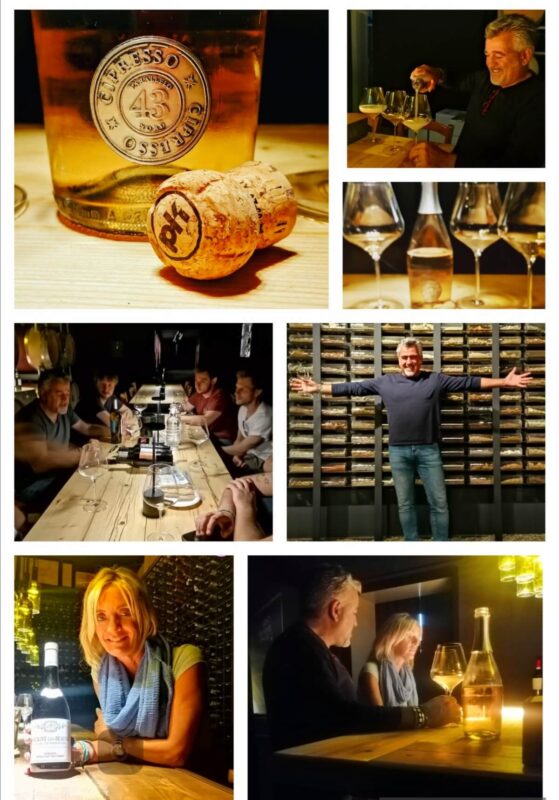
La nuova ‘Cantina di Roberto Cipresso’. Cosa bolle in pentola!
Siamo nella cantina ‘Cipresso 43’ . Questa è senz’altro un punto di riferimento per i vignaiuoli, che, in assenza momentanea degli strumenti giusti, vogliono provare a vinificare, mettendo alla prova le loro potenzialità. Ci addentriamo nella lounge degustazione per un’apericena di benvenuto. L’atmosfera è intima e raccolta con musica jazz in sottofondo. Particolare è l’arredamento decisamente urban chic:
- un lungo tavolo in legno;
- foto e quadri d’autore per tutto il corridoio.
Sbalorditiva è l’adiacente ‘Terroteca’, una collezione di ampolle in vetro con tutti i terreni calpestati da Roberto durante i suoi sopralluoghi professionali.
Bollicine di Sangiovese per andare altrove a Milano e tornare giù Montalcino!
Al bancone di materiale riciclato Roberto stappa e mi versa le soavi bollicine del suo ‘Altrove’. Esso è un metodo Charmat del cru di Brunello a ‘Poggio al Sole’ . Proseguendo la visita della sala, Roberto mi svela finalmente i suoi quattro piani segreti:
- ‘Milano da bere’: Roberto vuole installare dei vitigni pensili sulle terrazze dei più colossali e importanti grattacieli nella zona vip di ‘City Life’. Questa è a Portello , nord-ovest della metropoli. Un altro mega progetto fatto in collaborazione con noto otorino milanese. Per questo intento, Roberto sta allevando delle uve speciali , dette Sauvignon Kretos‘ . Questa è una varietà particolare di uve resistenti alle malattie (dette PWI, dal tedesco ‘pilzwiderstandfähig’, ossia ‘viti resistenti ai funghi’) ;
- ‘Eureka’: è una linea di bottiglie di 35 uve vinificate senza scopi commerciali destinate a un club di wine experts per un totale di 4000 aderenti , che vi accederanno tramite tesserà;
- ‘Parco del parallelo 43’: se c’è una cosa a cui Roberto è allergico è la monotonia ! Come la geometria perenne delle Langhe.! Se c’è una cosa che per Roberto è un credo, questa è la sostenibilità in tre fattori:
- impatto ambientale della coltivazione,;
- tollerabilità economica dell’operazione;
- sfruttamento consapevole della terra.
Con queste premesse è facile innamorarsi di un altro spettacolo che spunterà a breve a Montalcino:
- un giardino a forma circolare dei cinque vitigni sacri del parallelo 43° (Sangiovese, Sagrantino, Verdicchio, Vermentino, e Viognier ) che coabiteranno con flora e fauna che fiorisce tutto l’anno
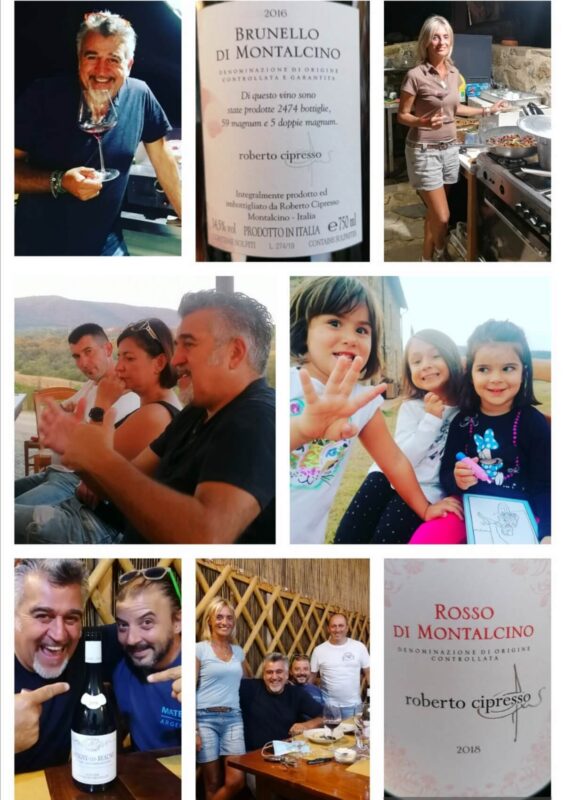
Cena sarda a Montalcino, ‘Osteria dei Briganti’
Fare due chiacchiere con Roberto è un attimo di crescita culturale e spirituale, al prezzo di una sbornia. Perché letteralmente ti ubriaca. Ci si può avvicinare a Roberto , se si possiede la giusta dose di empatia e si è on wine , ovvero collegati al vino! Il vino è infatti primae una bevanda seduttrice e un’opera d’arte .
Roberto è un vulcano e se qualche volta avete la fortuna come me di beccarlo in pausa fumante, approfittatene, prima che riprenda a scoppiettare! Anche Roberto è un essere umano, non preoccupatevi, specie se ha fame! Lo stomaco brontola, e allora si decide per una cena sarda nell’ ‘Osteria dei Briganti e dei Poeti’: porcheddu e patate esaltato da un ‘Savigny Les Beaune ler Cru Les Narbantons Domaine Mongeard Mugneret’ , un Pinot Nero da urlo!
Risveglio a ‘Poggio al Sole’. Brunello e Rosso di Montalcino firmati Roberto Cipresso
L’indomani la tranquillità a ‘Poggio al Sole’ è distratta dalla piacevole incursione di clienti di Padova e Bologna. Questi hanno giustamente selezionato questo buen ritiro per staccare la spina. Faccio colazione con caffè nero bollente e delle brioche calde , che Fabio mi omaggia prima di tuffarsi nella sua routine quotidiana.
Vedo dei bambini che inseguono Kyra, il barboncino di Roberto. Le mamme sorvegliano i loro pargoli, beatamente sdraiate su dei dondoli. Stanno beate all’ombra di ulivi per proteggere la loro pelle bianca dal sole settembrino, che ancora scotta.
Lascio la mia suite campestre e mi perdo nella natura della tenuta. Passeggio tra grappoli, viste sconfinate e un silenzio rigenerante. Al mio rientro mi accingo verso la cucina all’aperto di ‘Poggio al Sole’ . Attendo l’imbrunire per aiutare Roberto e Fabio a imbandire una tavolata per il banchetto della sera.
I rossi di Roberto Cipresso: Brunello e Rosso di Montalcino
Sopraggiungono gli invitati, persone affabili e contenute all’inizio. Decisamente più allegre dopo i miei spaghetti alla mediterranea, la grigliata e i rossi di Roberto :
- ‘Brunello di Montalcino 2018’: 100 % Sangiovese, con affinamento di un anno in barrique di rovere francese. Il colore è rosso rubino con riflessi granata, si apre al naso con le sue note di frutta rossa e liquirizia, cuoio, e cioccolato. I suoi tannini sono morbidi, al palato è strutturato e persistente;
- ‘Rosso di Montalcino’ : 100% Sangiovese, rosso rubino con sfumature porpora, all’olfatto molto intenso, sa di amarena e vaniglia. Un vino che possiede una giusta acidità, delicato al palato, e che permane a lungo.
La ‘quadratura del cerchio’ non è solo un enigma! Si tratta di un’ attitudine misurabile in tre vini!
Quello che mi colpisce di Roberto oltre il talento, la classe e l’umiltà, è l’attenzione per i dettagli, l’abilità di osservare le cose da un’altra prospettiva, l’ha appreso in montagna.
Come si è già accennato, un quadrato non può mai raggiungere l’area di un cerchio, per una semplice questione di ‘Pi greco’, il numero irrazionale. Però si può osare ragionarci su! Per Roberto non è una questione di avere per forza una soluzione a un problema, ma di avvicinarsi quanto più si può alla verità.
D’altra parte, questo anelito alla conoscenza ha spinto Roberto alla creatività nel vino, alla maestria di migliorarlo, dosando le peculiarità singolari di ogni vitigno.
4 vini di Roberto Cipresso fuori dal comune
Ne risultano dei sorsi sorprendenti, come quelli di questi tesori decantati da Roberto a un gruppo di giovani wine experts l’ultimo giorno prima della mia permanenza:
1. ‘Punto Bianco 2020’:un matrimonio perfetto tra la verticalità e l’ossatura del Vermentino Toscano e la vivacità del Verdicchio Marchigiano, i due vitigni autoctoni del parallelo 43, quelli che più esprimono la storicità delle lande attraversate da questa linea magica.
Il valore aggiunto di due mari che s’incontrano, l’Adriatico e il Tirreno in un calice che fa stupire. Sono due terroir diversi che però si amalgamano nello stesso parallelo e vibrano. Giallo paglierino scarico, al naso note floreali di tiglio e acacia con piacevoli sensazioni aromatiche di basilico.
La beva denota una buona freschezza con l’equilibrio leggermente spostato su mineralità e sapidità. Con affinamento di otto mesi in contenitori di acciaio, è un bianco di buon corpo, gradevole e contemporaneo;
2. ‘Punto Rosso 2019’ : la sensualità e l’acidità del Sangiovese Toscano prende forza e vigore grazie al Montepulciano Marchigiano, che lo arricchisce con la sua carnosità . Pensato come vino da mescita, questo vino è un passepartout , cioè sta bene con tutto.
Un rosso dal colore rubino, dai sentori olfattivi schietti e intensi, con profumi fruttati e sfumature delicatamente speziate. In bocca ha un buon corpo, mostra una media tannicità e una buona finitura;
3. ‘Pi Greco 2012’ : è un Sangiovese da San Quirico d’Orcia in purezza , un tripudio di spezie, frutta nera e rossa, fichi . Esso ha una buona acidità, e non vuole confrontarsi con le grandi DOC e DOCG dell’impero toscano.
Prende quindi un’altra strada, un rischio calcolato nelle complessità, nelle altitudini e in terroir finora poco valorizzati, che però esprimono un carattere personale e percettibile.
4. ‘Quadratura 2017’: Sangiovese di San Quirico d’Orcia (SI); Montepulciano di Moresco (FM) e Sagrantino di Spello (PG) , le tre uve autoctone più rinomate del nostro bel paese. La scommessa è stata quella di co-fermentarle tutta sulla stessa frequenza, quella del parallelo 43.
Un’accordatura che ha l’ambizione di rivelare il massimo bilanciamento. Una sorta di metamorfosi fermentativa di tre uve apparentemente distanti ma, nel risultato finale, molto affini. Il colore è di un rosso prepotente, all’olfatto è raffinato con il suo pepe e tabacco al mentolo.
Energico e ben rispondente, è un rosso che sfodera una morbidezza sinuosa e tannini abbondanti quanto vellutati. Freschezza senza cedimenti e struttura compatta lasciano presagire grande potenziale evolutivo.
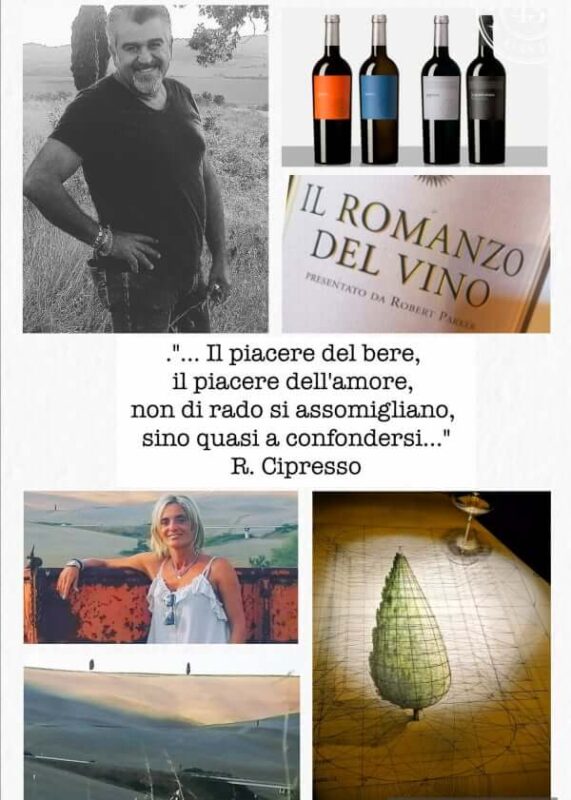
Bisogna alzare lo sguardo in cielo per vedere le stelle
Non è solo una questione di determinazione, passione e duro lavoro se Roberto ha sempre ottenuto ciò che ha voluto. Ci vuole sensibilità e apertura mentale. Roberto è un visionario, guarda in alto le stelle, immagina la realtà diversamente dagli altri, mette in discussione sempre. Impara, mischia, mescola e shakera, ci crede e poi lo fa!
Mi auguro per lui che ogni tanto possa fermarsi per godere della bellezza di cui si è circondato, ma non sarà mai forse fattibile.


